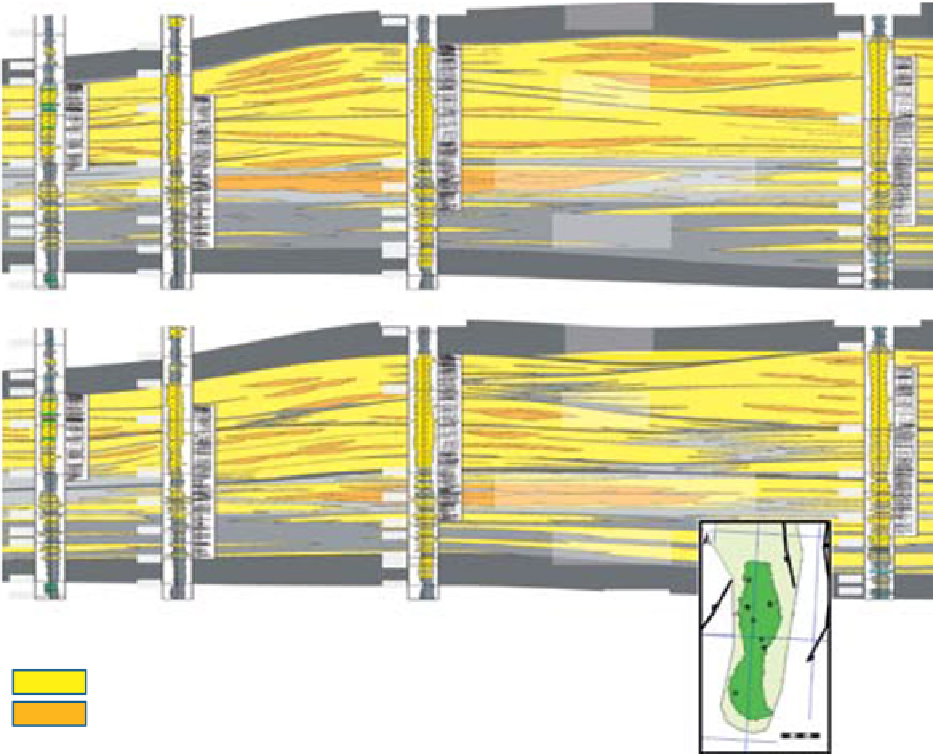Geoscience Reference
In-Depth Information
(A)
6305/4-1
6305/5-1
6305/8-1
6305/7-1
Lista Fm
Egga Sst
Basal Tang Fm Sst (Våle het's)
Springar Fm
(B)
6305/4-1
6305/5-1
6305/8-1
6305/7-1
Lista Fm
Egga Sst
Basal Tang Fm Sst (Våle het's)
Springar Fm
6305/4-2S
6305/4-1
6305/5-1
4km
8km
14km
6305/4-U-3
6305/8-A-2 H
6305/8-1
FTP/FK
Flooding Surfaces
Hemipelagic mudstones
Turbiditic mudstones
Pelagic claystones
Lobes
Channel-fills
6305/7-1
Fig. 5.
Well correlation scenarios of the Maastrichtian and Palaeocene succession across the Ormen Lange Field.
(A) Illustrates a scenario with laterally migrating lobe storeys and storey sets, whereas (B) illustrates a scenario with later-
ally shifting lobe storeys and storey sets. The correlations are flattened on Base Danian. Stratigraphic positions of flooding
surfaces (FKs and FTPs) are shown in Fig. 2.
The muddier units have been characterised
based on their combined lithological and textural
features, including presence (or absence) of sedi-
mentary structures, their style and intensity of
bioturbation and their contained microfossil types
and abundances (i.e. microfacies). Four different
types of mudstones were identified; Pelagic, hemi-
pelagic, contouritic and turbiditic. The identifica-
tion of these various types proved fundamental in
recognising architectural elements (see below)
and provided further insight into the background
depositional setting for the Ormen Lange fan
systems. A differentiation and recognition of the
origin and depositional processes inferred for this
various mudstones were only achieved via the
combined lithofacies, biofacies (ichnofacies) and
microfacies approach.
Facies associations
The lithofacies have been grouped into a series of
facies associations (Table 3) that represents transi-
tional sub-environments or a facies tract contin-
uum across an overall sandy turbidite fan (Fig. 7; see
Piper & Normark, 2001). These facies associations
include channel-belt sandstones, channel-to-lobe
transition zone sandstones, central lobe sand-
stones, peripheral lobe strata and lobe fringe
heteroliths. Two additional facies associations
have been identified, consisting either of the
anomalously thick and deformed lithofacies and/
or the more disorganised lithofacies types. These
occur at certain stratigraphic intervals and poten-
tially represent repeated changes in the overall
fan evolution, as discussed below.


















































































Search WWH ::

Custom Search